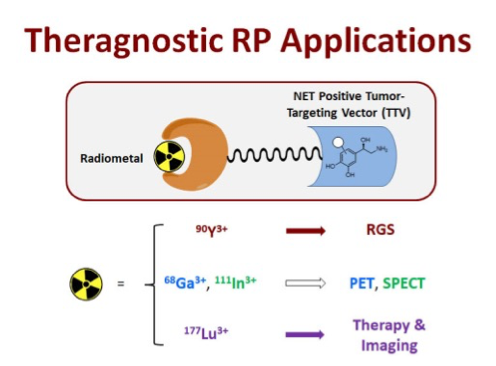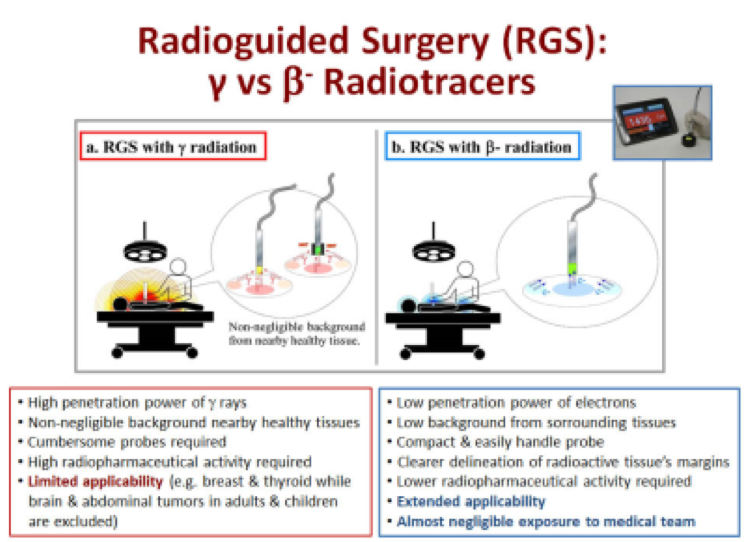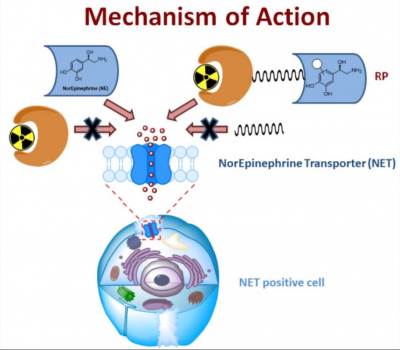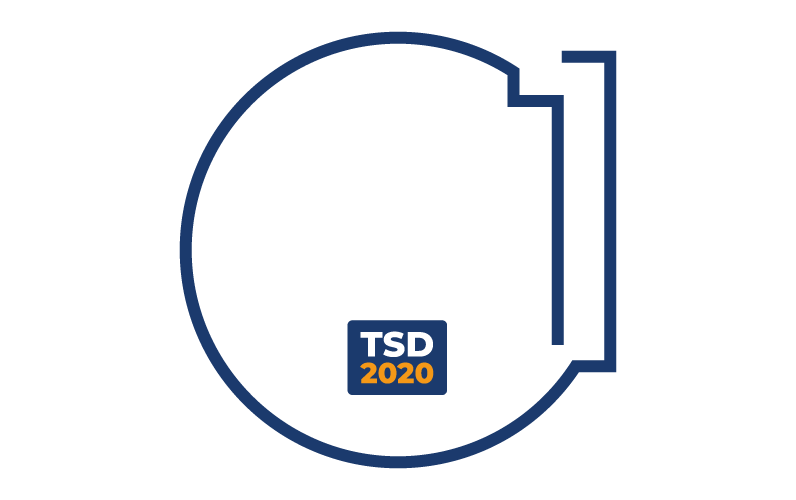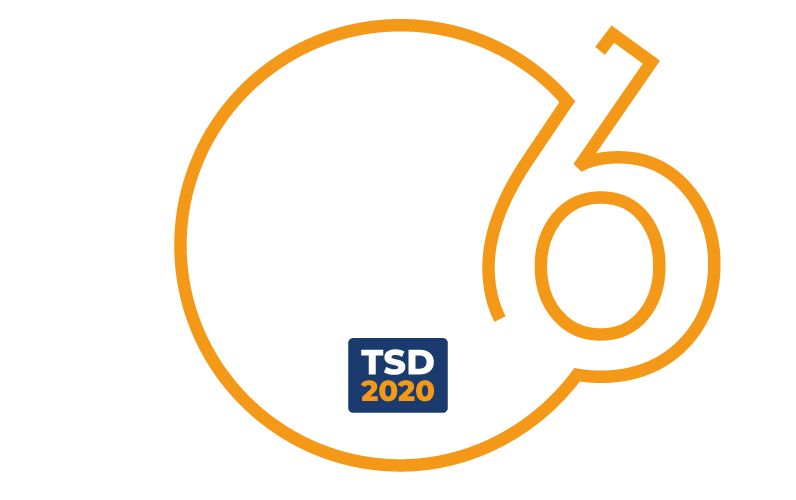
The theragnostic radiopharmaceutical is structurally related to the neurotransmitter norepinephrine which, because of this similarity, is the substrate of the axonal norepinephrine transporter (NET). Depending on the specific radiometal incorporated, this radiopharmaceutical can be potentially useful both as a tracer for the surgical removal guided by beta minus radiation and for diagnostic imaging and radiometabolic therapy of the neuroendocrine tumors that over-express the NET (pheochromocytomas, paragangliomas, neuroblastomas, etc.).







